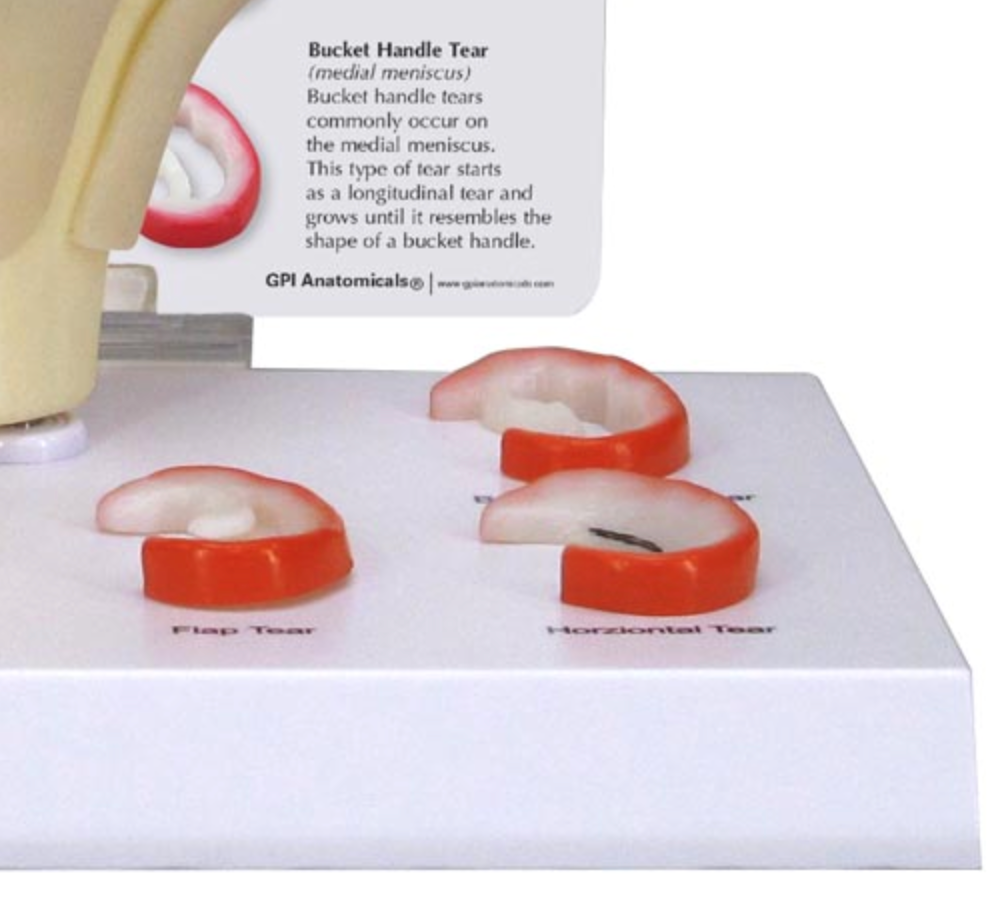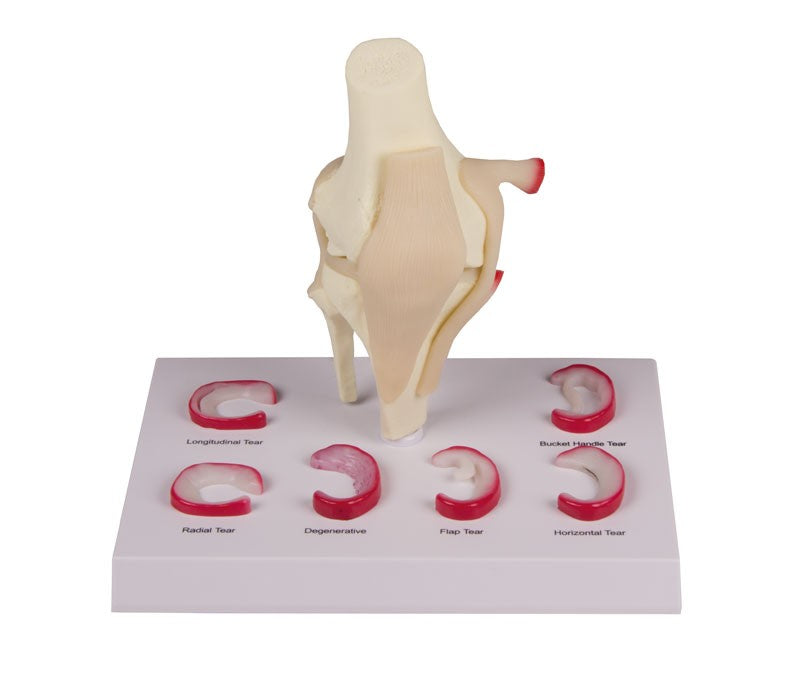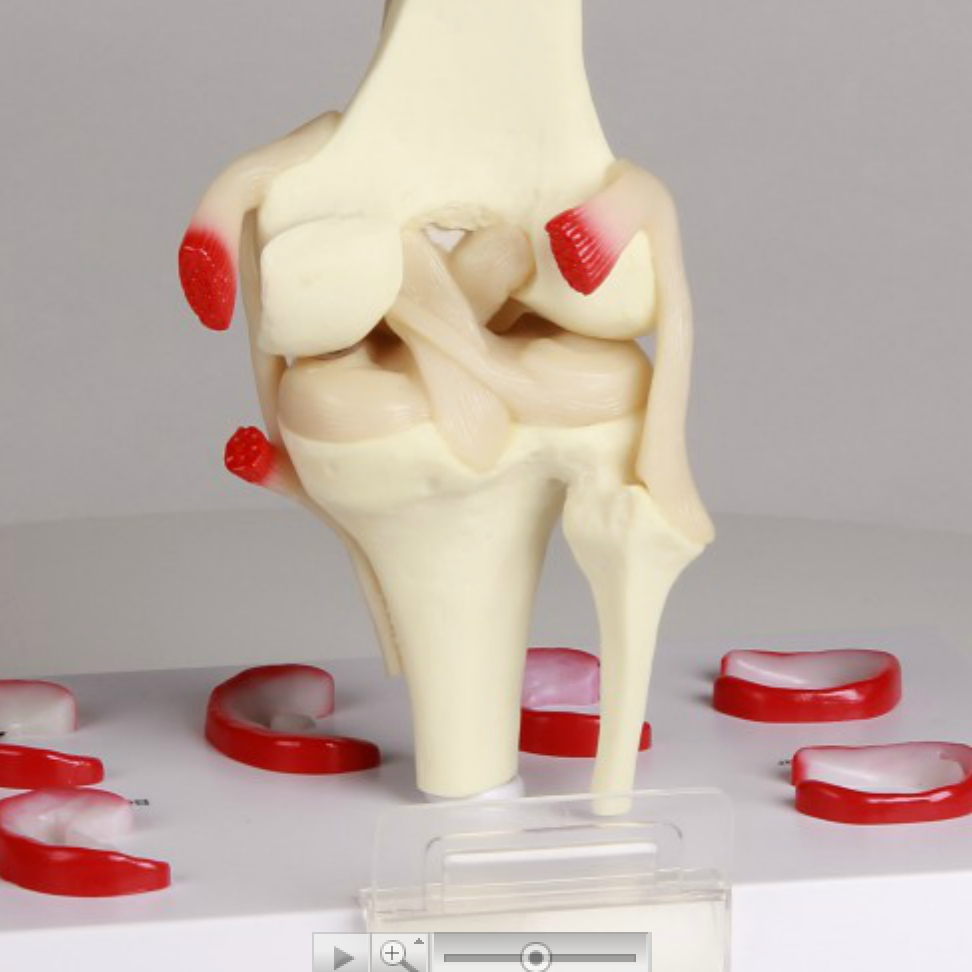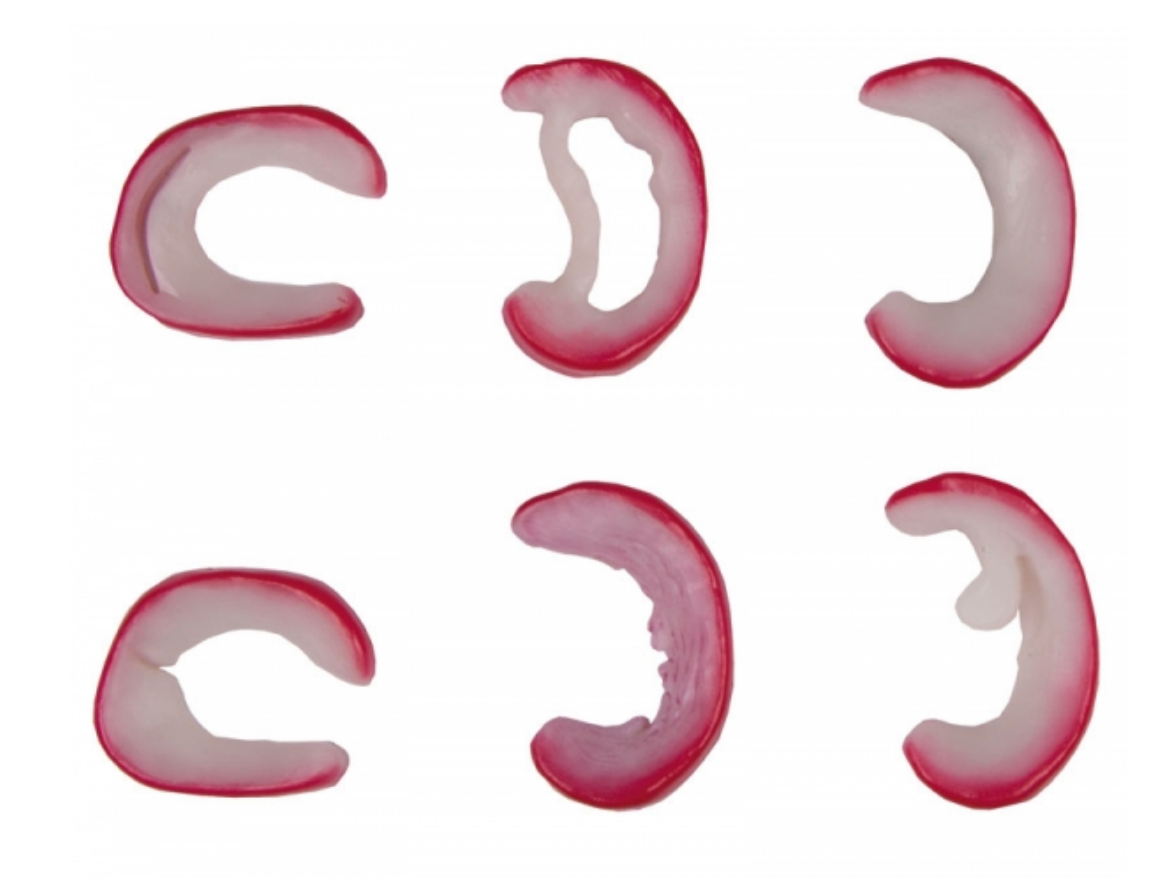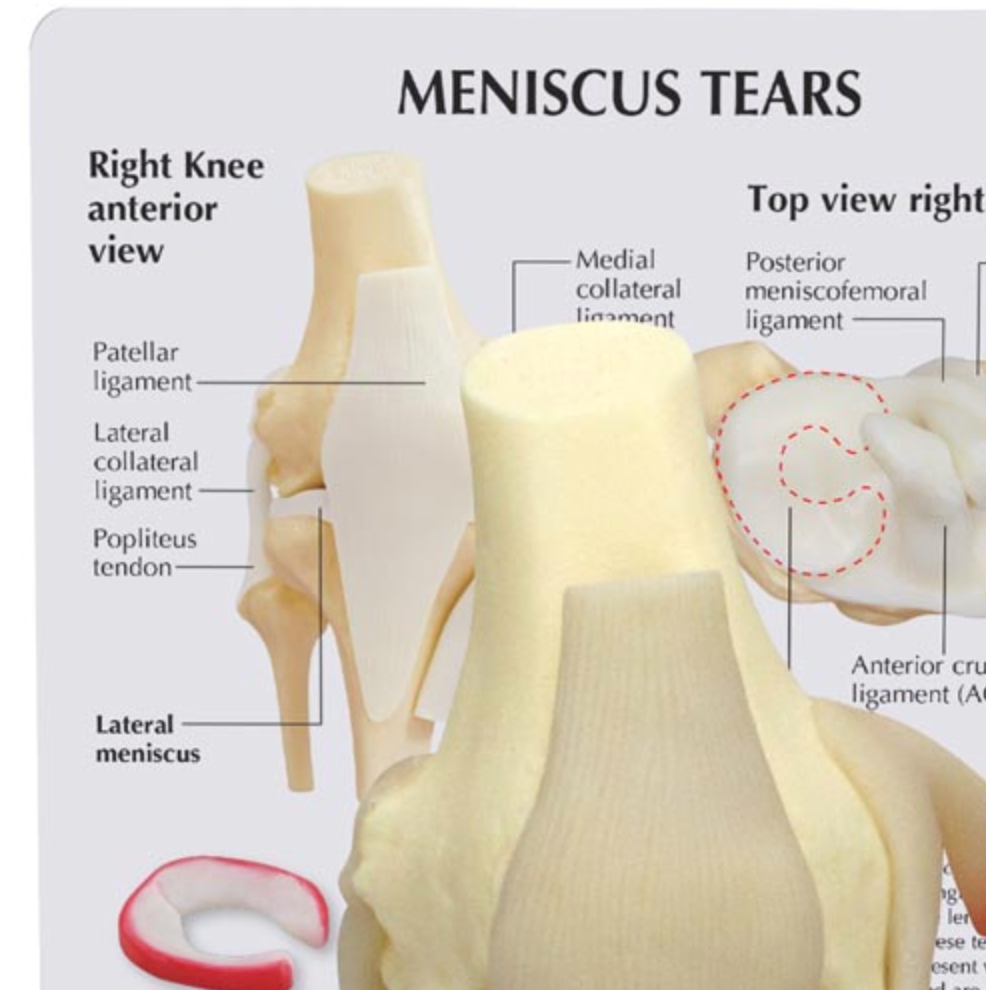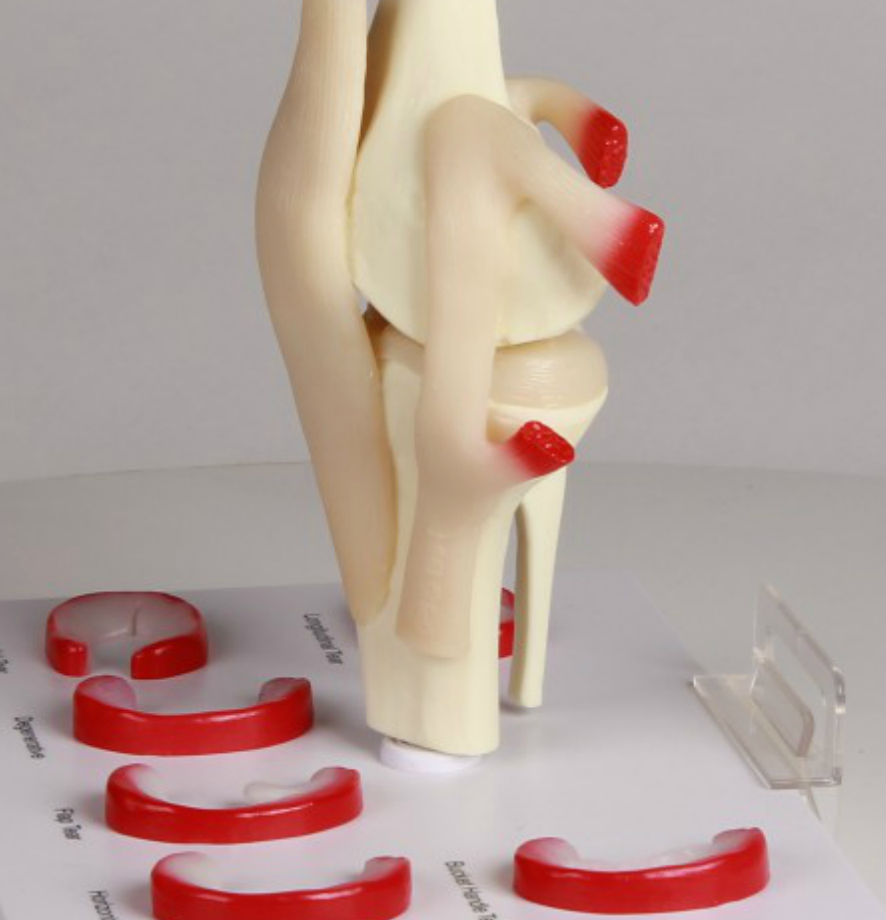SKU:EA1-1019500
Knee model with meniscal lesions and ligaments
Knee model with meniscal lesions and ligaments
Out of stock
this product is made to order. To place an order please call or write us.Couldn't load pickup availability
This model is a package solution targeted at meniscal lesions. It consists of a knee model in the natural size of the knee as well as 6 small illustrations of different meniscal lesions.
It is all delivered on one stand and measures 9 x 7 x 15 cm.
Anatomical features
Anatomical features
Anatomically, the knee model shows part of the thigh bone (femur), part of the shin bone (tibia), part of the calf bone (fibula), the kneecap (patella) and both menisci in the knee joint.
Wha. rubber, the model also shows many of the ligaments that belong to the knee joint.
You see the following:
Corpse. collaterale tibiale (medial lateral ligaments), equal. collaterale fibulare (lateral side ligaments), equal. cruciatum posterius (posterior cruciate ligament), equal. cruciatum anterius (anterior cruciate ligament), equal. meniscofemorale posterius as well as a bit of the quadriceps tendon with the embedding of the patella and the continuation "below" like a corpse. patellae attached to the tibia.
In addition, the model shows the muscle tendon attachment of the pes anserinus (crow's foot) as well as the muscle tendon attachment of the medial and lateral head from the gastrocnemius muscle.
The 6 small illustrations of meniscal lesions show e.g. the longitudinal and the horizontal lesion.
Product flexibility
Product flexibility
In terms of movement, the joint model is not flexible. The model cannot therefore be used to demonstrate the various movements in the knee joint.
Clinical features
Clinical features
Clinically speaking, this package solution is created for understanding meniscal lesions and consequences such as locking of the knee. The model is also ideal for understanding anserinus tendinitis, ligament injuries (especially injuries to the cruciate ligament and collateral ligaments), patellar luxation (joint slip in the kneecap), patellar fracture and proximal knee joint fractures.
The model can perhaps also be used to understand disorders such as osteoarthritis of the knee (knee osteoarthritis), rheumatoid arthritis (rheumatoid arthritis) and runner's and swimmer's knee.
Share a link to this product

A safe deal
For 19 years I have been at the head of eAnatomi and sold anatomical models and posters to 'almost' everyone who has anything to do with anatomy in Denmark and abroad. When you shop at eAnatomi, you shop with me and I personally guarantee a safe deal.
Christian Birksø
Owner and founder of eAnatomi ApS


